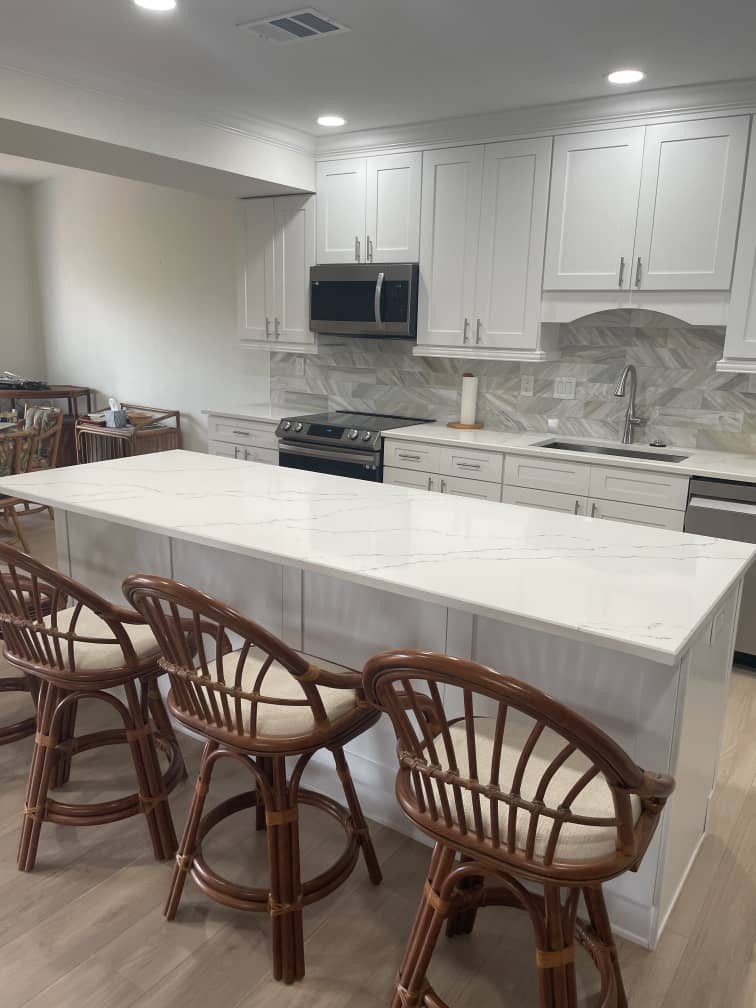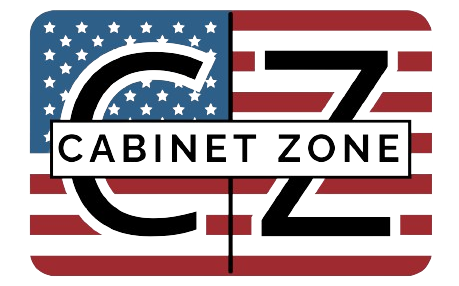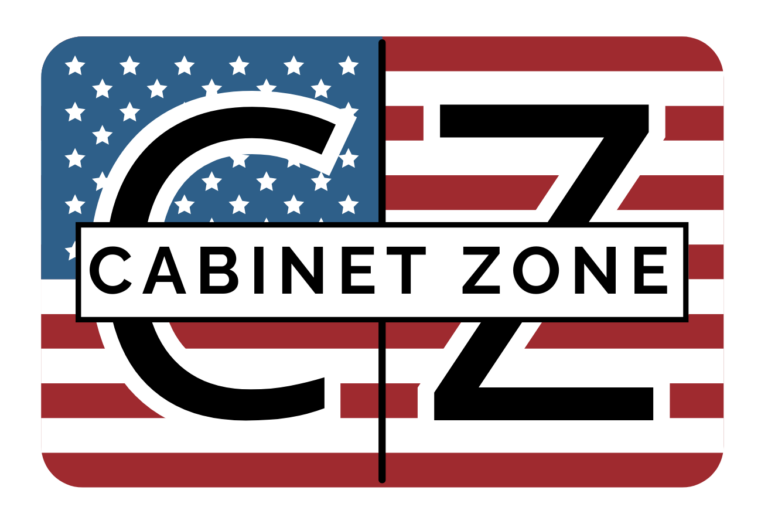Importance of Home Improvement
Home improvement is a vital aspect of homeownership that offers numerous benefits, ranging from financial gains to enhanced living conditions. Here are the key reasons why home improvement matters:
- Enhancing Property Value: Upgrades and renovations can significantly increase the market value of your home, making it more attractive to potential buyers.
- Improving Comfort and Functionality: Home improvements allow you to tailor your living space to better suit your personal preferences and lifestyle needs.
- Increasing Energy Efficiency: Implementing energy-efficient improvements can lower your utility bills and reduce your environmental footprint.
Cabinet Zone: The Role of Quality Cabinets in Home Improvement
When considering home improvements, especially in areas like the kitchen or bathroom, the quality of cabinets plays a crucial role. High-quality cabinets not only enhance the aesthetic appeal of your space but also add value to your home. Investing in durable, stylish cabinetry ensures that your renovations are both functional and long-lasting, contributing to the overall success of your home improvement project.
Planning for Home Improvement
Effective planning is the cornerstone of any successful home improvement project. Proper preparation helps ensure that your renovations are completed on time, within budget, and to your satisfaction.
Setting a Budget
Establishing a realistic budget is the first step in planning your home improvement project. This includes:
Estimating Costs
Research the potential costs of materials, labor, and any additional expenses related to your project. Understanding the financial scope of your renovations will help you make informed decisions and avoid overspending.
Planning for Unexpected Expenses
It’s common for unforeseen costs to arise during renovations. Setting aside a contingency fund—typically around 10-20% of your budget—can help you manage these unexpected expenses without derailing your project.
Creating a Timeline
Developing a timeline is essential for keeping your project on track. A well-defined schedule ensures that each phase of the renovation is completed in a timely manner, reducing the likelihood of delays.
Prioritizing Projects
When planning home improvements, it’s important to prioritize projects based on urgency and impact. Address critical repairs that affect safety or functionality first, followed by cosmetic upgrades that enhance the enjoyment and aesthetic appeal of your home.
Cabinet Zone: Budgeting for Quality Cabinets
When setting your budget, allocate sufficient funds for high-quality cabinets, especially if you’re renovating a kitchen or bathroom. Quality cabinetry is a worthwhile investment that adds both practical and aesthetic value to your home, making it a key consideration in your overall budget.
Types of Home Improvement Projects
Home improvement projects can vary widely, from interior updates to exterior renovations and energy-efficient upgrades. Here are some common types of projects to consider:
Interior Improvements
- Kitchen Remodeling: A modern kitchen is a top priority for many homeowners and often yields a high return on investment (ROI).
- Bathroom Upgrades: Upgrading fixtures, adding storage, and improving the layout can enhance both functionality and comfort.
- Basement Finishing: Transforming an unfinished basement into a usable living space can add significant value to your home.
Exterior Improvements
Exterior renovations can boost curb appeal and protect your home from the elements. Popular projects include:
- Landscaping Changes: Enhancing your yard with new plants, walkways, or lighting.
- Roof Repair/Replacement: Ensuring your roof is in good condition to prevent leaks and energy loss.
- Adding Outdoor Living Spaces: Decks, patios, and pergolas extend your living space and increase your home’s usability.
Energy-Efficient Upgrades
Energy-efficient improvements not only reduce your environmental impact but can also lower your energy bills. Consider:
- Improved Insulation: Enhances energy efficiency by reducing heat loss.
- Installing Energy-Efficient Appliances: Modern appliances consume less energy, saving you money over time.
- Adding Solar Panels: Solar energy can significantly reduce or even eliminate your electricity costs.
Cabinet Zone: Enhancing Interior Spaces with Quality Cabinets
In any interior renovation, especially kitchen and bathroom remodels, the quality of your cabinets is crucial. Durable and aesthetically pleasing cabinets provide essential storage and elevate the design of the space. Whether you’re remodeling a kitchen or upgrading a bathroom, choosing the right cabinets can make all the difference in the outcome of your project.

Hiring Professionals vs DIY
Deciding whether to hire professionals or take a DIY approach is a common consideration in home improvement. Each option has its pros and cons:
Hiring Professionals
Consider hiring professionals if:
- The Project is Large-Scale: Major renovations often require extensive knowledge and experience.
- Specialized Skills are Needed: Tasks like electrical work, plumbing, or structural changes may be beyond the scope of a DIY project and require professional expertise.
DIY Projects
DIY might be feasible when:
- The Project is Small-Scale: Simple tasks like painting, landscaping, or minor repairs are often manageable without professional help.
- Necessary Tools and Skills are Available: If you already have the tools and know-how, DIY can be a cost-effective and rewarding option.
Cabinet Zone: Professional vs DIY Cabinet Installation
Installing cabinets is a critical aspect of many home improvement projects. While some homeowners may opt for DIY installation, hiring professionals can ensure precision and quality, particularly with custom or complex designs. Professional installation not only saves time but also ensures that your cabinets are properly aligned, securely fastened, and aesthetically pleasing.
Navigating Building Codes and Permits
Understanding and complying with local building codes is crucial when undertaking any significant home improvement project. This ensures that your renovations are safe, legal, and up to standard.
Importance of Building Codes
Building codes are designed to protect the safety of your home and its occupants. They cover everything from electrical systems to structural integrity, ensuring that all work meets minimum safety standards.
Acquiring Necessary Permits
Before starting your project, it’s essential to apply for any required permits. This not only ensures compliance with local regulations but also helps avoid potential fines or the need to redo non-compliant work.
Cabinet Zone: Ensuring Cabinet Installations Meet Codes
In kitchen and bathroom renovations, ensuring that your cabinet installations comply with building codes is vital. This includes adhering to standards for wall attachments, clearances, and accessibility. Professional installers are typically well-versed in these requirements, further highlighting the value of hiring experts for critical tasks.
Financing Home Improvement Projects
Funding your home improvement project can be achieved through various financial options. Here are some common methods:
- Savings: If you have the means, paying for renovations out of pocket is often the best option, as it avoids interest and debt.
- Home Improvement Loans: These loans are specifically designed for funding renovations and often offer favorable terms compared to other types of credit.
- Home Equity Line of Credit (HELOC): A HELOC allows you to borrow against the equity in your home, providing access to funds as needed for your project.
Cabinet Zone: Investing in Quality Cabinets with Smart Financing
When financing your home improvement projects, consider allocating a portion of your budget specifically for high-quality cabinets. Given their impact on the functionality and aesthetics of your home, cabinets are a smart investment that can enhance your property’s value. Financing options like a HELOC can provide the necessary funds to purchase top-tier cabinetry without compromising on quality.
Tips for a Successful Home Improvement Project
To ensure your home improvement project runs smoothly and successfully, consider the following tips:
- Stay Organized: Keep detailed records of your budget, timeline, and any agreements with contractors.
- Be Flexible: Plans may change due to unforeseen circumstances, so it’s important to remain adaptable.
- Communicate Effectively: Clear communication with contractors and other stakeholders is key to avoiding misunderstandings and ensuring that your project meets your expectations.
Cabinet Zone: Coordinating with Cabinet Professionals
When undertaking a home improvement project that involves cabinet installation, effective communication with your cabinet supplier and installer is crucial. This ensures that the cabinets meet your specifications, are delivered on time, and are installed correctly, contributing to the overall success of your renovation.
Conclusion: The Rewards of Home Improvement
Completing home improvements can yield multiple benefits, including satisfaction from seeing a finished project, increased property value, and improved quality of life. Whether you’re enhancing your home’s energy efficiency, updating its style, or simply making it more comfortable, the rewards of home improvement are well worth the effort.
Cabinet Zone: The Lasting Impact of Quality Cabinets
Investing in quality cabinets is one of the most impactful decisions you can make in any home improvement project. Well-crafted cabinets enhance the functionality, style, and value of your home, offering lasting benefits that make your investment worthwhile. By choosing high-quality materials and professional installation, you ensure that your cabinets will serve you well for years to come.
FAQ Section
Q1: Why should I prioritize urgent repairs over cosmetic upgrades?
A1: Urgent repairs often involve safety issues or functionality problems that could worsen over time if not addressed immediately. Prioritizing these ensures that your home remains safe and livable.
Q2: Is DIY always more cost-effective than hiring professionals?
A2: Not necessarily. While DIY can save money on labor costs, hiring professionals might be more cost-effective in the long run due to their expertise in avoiding common mistakes and ensuring high-quality work.
Q3: Are there any drawbacks to using my savings for funding renovation projects?
A3: One potential drawback is depleting your emergency fund, which could leave you financially vulnerable in the event of unexpected situations, such as medical emergencies or job loss. It’s important to balance your desire for home improvements with maintaining financial security.
Contents
- 1 Importance of Home Improvement
- 2 Planning for Home Improvement
- 3 Types of Home Improvement Projects
- 4 Hiring Professionals vs DIY
- 5 Navigating Building Codes and Permits
- 6 Financing Home Improvement Projects
- 7 Tips for a Successful Home Improvement Project
- 8 Conclusion: The Rewards of Home Improvement
- 9 FAQ Section



